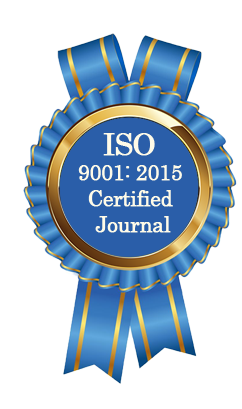| All | Since 2020 | |
| Citation | 105 | 60 |
| h-index | 4 | 4 |
| i10-index | 3 | 2 |
WJAHR Citation 
Login
News & Updation
Best Article Awards
World Journal of Advance Healthcare Research (WJAHR) is giving Best Article Award in every Issue for Best Article and Issue Certificate of Appreciation to the Authors to promote research activity of scholar.
Best Article of current issue
Download Article : Click here
Indexing
Abstract
COMPLICATIONS OF NEWBORNS WITH DIABETIC MOTHERS AT MOSUL CITY
Saad Hussein Hammo* and Omar Ahmed Mohammed
ABSTRACT
Background: Diabetes mellitus complicates around 1% of pregnancies and it is one of the most common and dangerous metabolic diseases that impact the health of both mothers and newborns. An unfavorable pregnancy outcome is more likely to occur in pregnant women with type 1 diabetes, type 2 diabetes, and gestational diabetes mellitus. Controlling blood sugar levels both before and during pregnancy is crucial for better results. Objectives: Is to study the complications in infants of diabetic mothers and to see the outcome of these infants. Methods: The study is a hospital based, observational, descriptive, cross sectional study. It was conducted between 10th of January 2023 to the end of February 2025 at the intensive care unit of Mosul General Hospital. The questionnaire includes three parts, part one for demographic information, part two for perinatal history and part three for natal and post-natal possible complications. Results: The study included 50 infants with IDM out of 2000 babies admitted to NICU which represent a total incidence of IDM of (2.5%). Of them; 30 (60%) were males and 20 (40%) were females. It’s evident that hypoglycemia was present among 36 (72%), followed by hyperbilirubinemia among 12 (24%), then polycythemia among 6 (12%). Hypocalcemia was present among 5 (10%), while chest x-ray positive findings (cardiomegaly, respiratory distress syndrome, ground glass appearance with air bronchogram) is prevalent among 15 (30%) followed by Echocardiogram findings (hypertrophic cardiomyopathy with and without small VSD). Lastly; blood culture was positive among 3 (6%) of the study participants. Moreover; Birth asphyxia was present among 4 (8%) babies, birth trauma among 3 (6%) and congenital short limbs among 1 (2%). Conclusion: A high rate of complications was noted among the infants of diabetic mothers; therefore; these infants should be born in hospitals with specialized neonatal care facilities for managing such complications; additionally, all pregnant women should be screened for gestational diabetes; and, most importantly, the mothers should follow strict glycemic control, appropriate antenatal care, and close infant monitoring to prevent morbidity and mortality which can occurred.
[Full Text Article] [Download Certificate]
